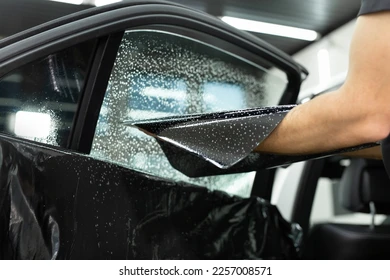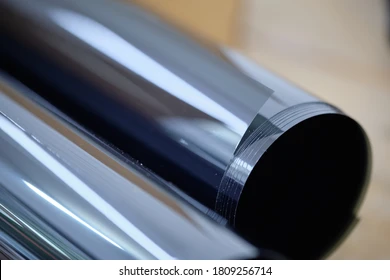
Shedding Light on Kansas Window Tint Law
Navigating the intricacies of Kansas window tint law is essential for vehicle owners who wish to customize their cars while staying compliant with state regulations. This article delves into the specifics of the law, helping you understand the permissible tint limits, exceptions, and penalties for non-compliance. Let’s dive into what Kansas window tint law means for you.
Understanding Kansas Window Tint Law
Kansas window tint law is crucial for maintaining road safety by regulating the amount of light passing through car windows. The law primarily focuses on Visible Light Transmission (VLT), determining how much light can penetrate the tinted windows. Here’s a comprehensive breakdown of the regulations:
| Window Type | Tinting Regulations |
| Front Windshield | Tinting is permitted only on the top 5 inches of the windshield or above the manufacturer’s AS-1 line, whichever is closer to the top. The minimum Visible Light Transmission (VLT) allowed for this area is 35%. |
| Front Seat Side Windows | These windows must allow more than 35% of light to pass through, ensuring adequate visibility for both the driver and passengers. |
| Back Seat Side Windows | Kansas law does not impose specific VLT requirements for the back seat side windows. Hence, any level of tint darkness can be applied to these windows. |
| Rear Window | Similar to the back seat side windows, there are no restrictions on tint darkness for the rear window. |
Violating Kansas window tint law can result in penalties such as fines and mandatory removal of illegal tints. The severity of penalties may vary depending on the degree of non-compliance and prior offenses.
Legal Considerations and Exemptions
Understanding the legal considerations and exemptions is crucial for vehicle owners to ensure compliance with the law while addressing personal needs. The Kansas window tint law primarily regulates the darkness of tint allowed on vehicle windows, emphasizing transparency for safe visibility both during the day and at night.
Overview of Kansas Window Tint Law
Kansas statute 8-1749a provides the legal requirements for window tinting on vehicles. The law primarily focuses on the darkness of tint permitted on different windows of the vehicle. Understanding these regulations is essential to ensure compliance and avoid potential legal penalties. Here are the key provisions of the law:
- Windshield: Non-reflective tint is permitted above the manufacturer’s AS-1 line or top 5 inches, with a minimum light transmittance of 35%.
- Front Side Windows: Must allow more than 35% of light transmission.
- Back Side Windows and Rear Window: Must also allow more than 35% of light transmission.
Adhering to these specifications is crucial to maintain visibility for safe driving conditions.
Exemptions for Medical Necessities
The Kansas window tint law acknowledges that some individuals require additional protection from sunlight due to medical conditions. To address this, exemptions are available for those who can provide documented evidence of medical necessity for darker window tinting. Here’s how the exemption process works:
- Documentation Requirement: Applicants must obtain documentation from a licensed physician, certifying the medical necessity of darker window tinting due to a specific medical condition.
- Application Process: The documented evidence must be submitted to the Kansas Department of Revenue for consideration.
- Review and Approval: The Department of Revenue reviews the submitted documentation and determines eligibility for the medical exemption.
Applying for a Waiver
Vehicle owners seeking a waiver for darker window tinting based on medical necessity must follow a structured process:
- Consultation with a Physician: Schedule an appointment with a licensed physician to evaluate the medical condition necessitating darker window tinting.
- Form Completion: Obtain the necessary forms for the waiver application from the Kansas Department of Revenue.
- Submission of Documentation: Compile the medical documentation along with the completed forms and submit them to the Department of Revenue.
- Evaluation and Decision: The Department of Revenue reviews the submitted documentation to determine eligibility for the medical exemption.
- Receipt of Waiver: Upon approval, the applicant will receive a waiver allowing the use of darker window tinting on their vehicle.
Compliance and Enforcement
While exemptions for medical necessities exist, it’s essential for vehicle owners to ensure full compliance with all legal requirements. Law enforcement agencies in Kansas actively enforce window tint laws to maintain road safety standards. Vehicle owners should be aware that failure to comply with tinting regulations, even with a medical exemption, may result in legal consequences.
Reflective and Colored Tint

Kansas window tint law also covers the reflectiveness and color of the tint:
Reflective Tint
Reflective tinting films are engineered to reflect incoming light, offering benefits such as heat reduction and glare reduction. However, excessive reflectiveness can pose hazards to other drivers, particularly during nighttime or in low-light conditions. To address this concern, Kansas law imposes specific restrictions on the level of reflectiveness permitted for window tints.
- Regulation: The Kansas window tint law mandates that the front and back side windows of vehicles must not exceed a certain level of reflectiveness.
- Reflectiveness Limit: According to the law, the reflectiveness of tinted windows should not surpass 35%. This limitation aims to maintain adequate visibility for drivers both inside and outside of the vehicle, thereby reducing the risk of accidents caused by glare or impaired vision.
Colors
In addition to regulating the darkness and reflectiveness of window tint, Kansas law also governs the colors that can be utilized. Certain colors are prohibited to prevent confusion with emergency vehicles, which is essential for ensuring clear identification and upholding public safety on the roads.
- Prohibited Colors: Kansas prohibits the use of specific colors for window tint, including red, amber, and yellow.
- Reasoning: These colors are commonly associated with emergency vehicles, such as fire trucks, ambulances, and law enforcement vehicles. Allowing window tints in these colors could lead to confusion among other drivers, potentially impeding emergency responses or causing accidents.
Penalties for Non-Compliance
Ensuring compliance with Kansas window tint law is essential to avoid penalties and maintain safe driving conditions. Failure to adhere to these regulations can result in various consequences, including fines and potential vehicle impoundment. Understanding the penalties for non-compliance is crucial for vehicle owners to make informed decisions regarding their window tints.
Fines
One of the primary penalties for violating Kansas window tint law is the imposition of fines. These fines serve as a deterrent to encourage compliance with tinting regulations and can vary depending on the severity of the offense.
- First Offense: For a first-time violation of window tint laws, drivers may be required to pay a fine. The amount of the fine typically depends on factors such as the degree of non-compliance and whether it poses a significant risk to road safety.
- Repeat Offenses: Repeat violations of window tint laws can result in higher fines. Law enforcement agencies may escalate penalties for drivers who repeatedly fail to comply with tinting regulations, emphasizing the importance of adherence to the law.
Tint Removal
In addition to fines, drivers found to have illegal window tint may be required to remove the tint from their vehicle. Tint removal serves as a corrective measure to bring the vehicle into compliance with state regulations.
- Mandatory Removal: Law enforcement agencies may mandate the removal of illegal window tint as part of the penalty for non-compliance. Vehicle owners are typically responsible for covering the costs associated with tint removal.
- Verification of Compliance: Following tint removal, drivers may be required to provide proof of compliance with window tint laws. This verification may involve inspections by law enforcement or other authorized personnel to ensure that the tint has been removed satisfactorily.
Vehicle Impoundment
In extreme cases of non-compliance, particularly for repeat offenders or instances of egregious violations, vehicle impoundment may be a potential consequence.
- Extreme Cases: If non-compliance with window tint laws poses a significant risk to road safety or if drivers repeatedly disregard tinting regulations despite previous penalties, law enforcement agencies may opt to impound the vehicle.
- Temporary Seizure: Vehicle impoundment involves the temporary seizure of the vehicle by law enforcement authorities. During this time, owners may incur additional costs related to impoundment fees and storage charges.
Legal Ramifications
In addition to immediate penalties such as fines and tint removal, non-compliance with Kansas window tint law can have long-term legal ramifications for vehicle owners.
- Criminal Record: Repeat offenses or serious violations of window tint laws may result in criminal charges, leading to the creation of a permanent criminal record for the driver.
- Insurance Implications: Some insurance companies may view non-compliance with tinting regulations as a risk factor, potentially resulting in higher insurance premiums or denial of coverage.
Installation and Certification
When getting your windows tinted in Kansas, it’s essential to use a reputable installer who uses compliant materials. Kansas window tint law requires that the film manufacturer certify the tint as being within the state’s legal limits. Moreover, a sticker identifying the certification must be displayed between the film and glass on each tinted window.
Conclusion
Kansas window tint law is designed to balance customization of vehicles with safety and visibility. Whether you’re considering tinting your car windows for aesthetic reasons or medical necessity, understanding and adhering to the state’s legal requirements is crucial. With the right information and compliance, you can enhance your vehicle’s appearance and utility without running afoul of the law. Always ensure that any modifications to your vehicle’s windows are within Kansas’s legal standards to avoid penalties and ensure a safe driving experience.
FAQ
A: Yes, but only the top 5 inches with a tint that allows at least 35% of light to pass through.
A: Yes, individuals with specific medical conditions that require protection from sunlight can apply for a medical exemption through the Kansas Department of Revenue.
A: You may be subject to a fine and be required to remove the tint. Repeated offenses can lead to increased penalties.
A: Yes, Kansas law requires a sticker to be placed between the film and glass on each tinted window to show that the tint complies with state regulations.
A: For the front side windows, 35% VLT is the darkest allowed. The back side windows and rear window can have any darkness.


